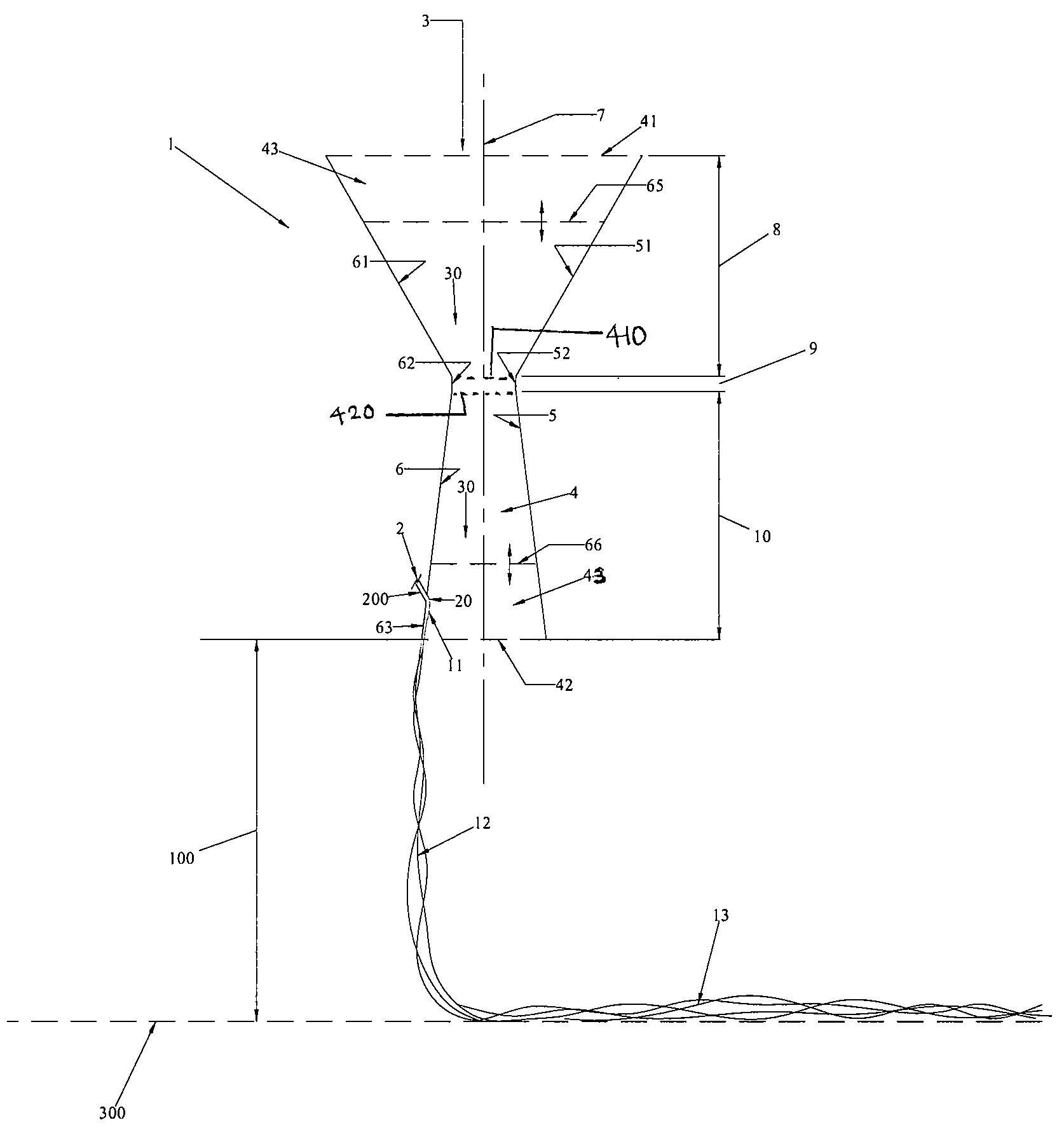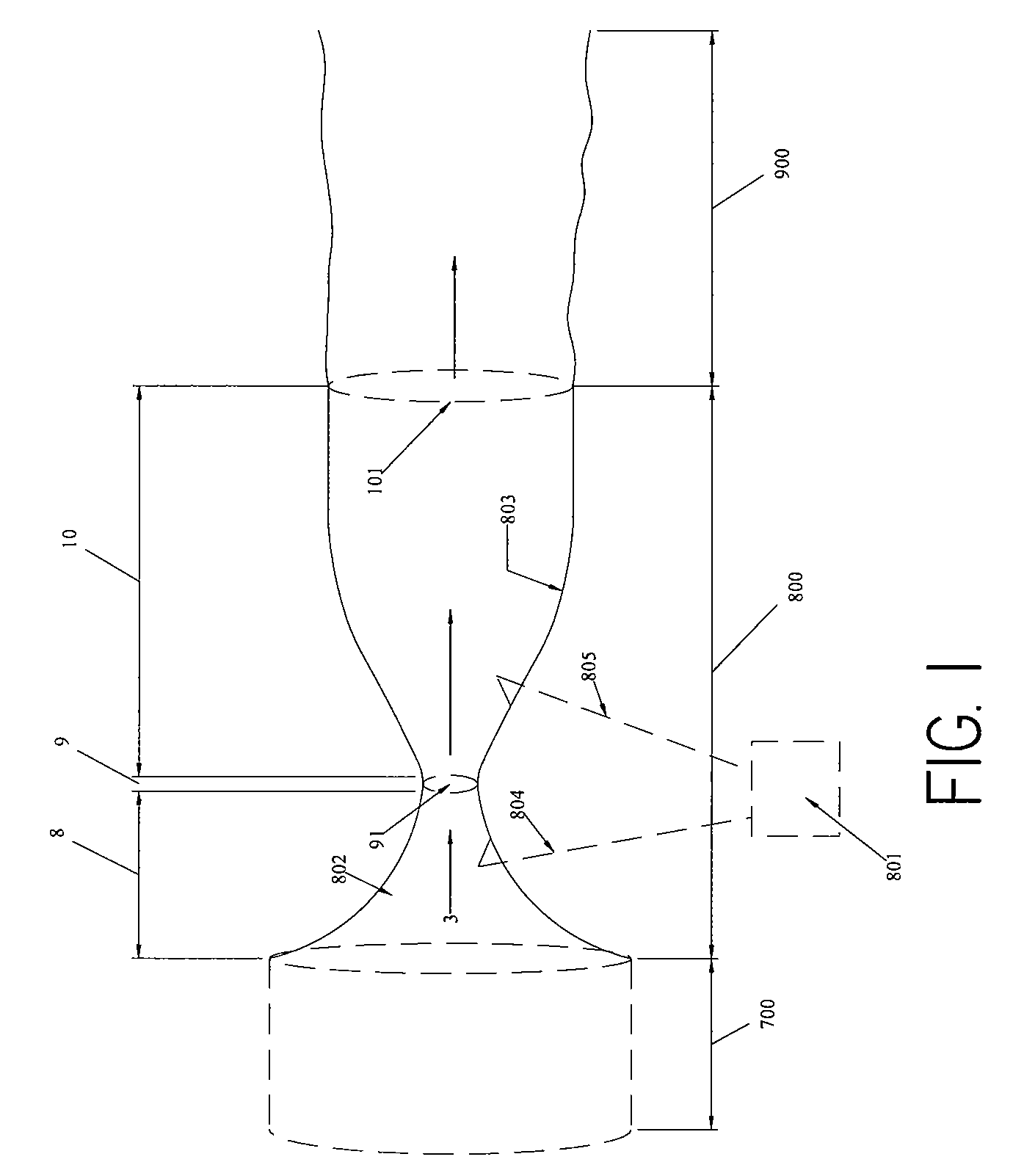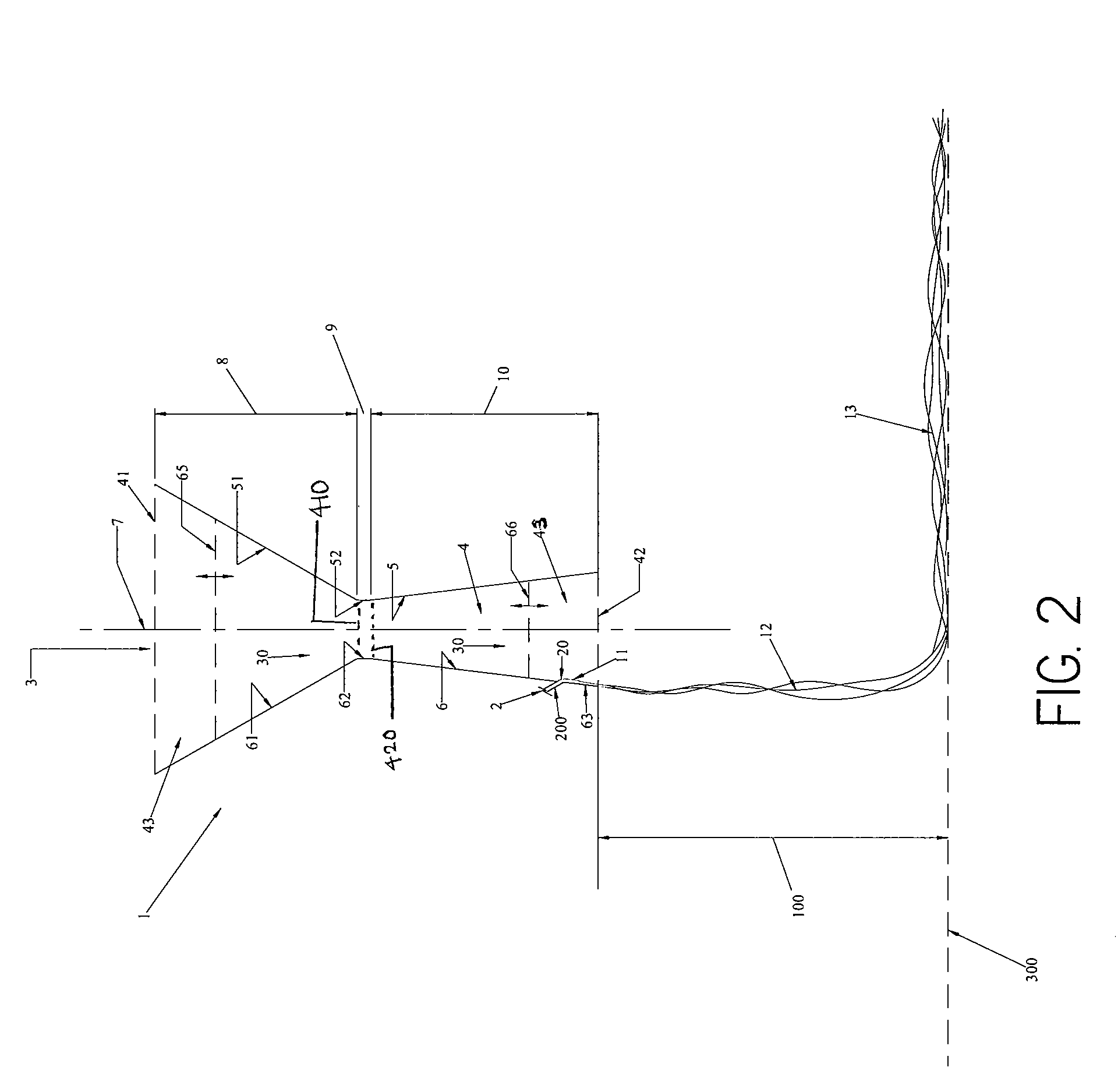Process and apparatus for producing sub-micron fibers, and nonwovens and articles containing same
a technology of sub-micron fibers and processing equipment, which is applied in the direction of spinnerette packs, weaving, manufacturing tools, etc., can solve the problems of low defect fibers, difficult production of cost-effective sub-micron fibers, and high production costs of conventional spunmelt equipment arrangements, so as to reduce gas demand, reduce energy consumption, and increase the output of sub-micron fibers
- Summary
- Abstract
- Description
- Claims
- Application Information
AI Technical Summary
Benefits of technology
Problems solved by technology
Method used
Image
Examples
example
[0068]An extruder (2.5 inch diameter, single screw extruder) and a conventional melt blown die body (25 inch width) were used to provide a source of 1800 MFR polypropylene. The extruder temperature was 650° F. A nozzle generally having the configuration of FIG. 4 was mounted to a conventional extruder die body using a conventional gasketed bolt mount at an upper flat surface region on the nozzle device. A source of pressurized air was fed from an air supply to the inlet of the nozzle via air-tight connections and seals. The nozzle had the following geometrical features (using FIG. 4 as a non-limiting example): an 0.016 inch as the minimum distance between opposing walls 5 and 6 in the throat section 9; cold wall 5 converging at an angle θ of negative 1.5 degrees towards the bisecting plane 7; hot wall diverging away at an angle β of 2 degrees from the bisecting plane 7; the polymer passage entered the second section in the second, downstream half of the second section and had a hydr...
PUM
| Property | Measurement | Unit |
|---|---|---|
| temperature | aaaaa | aaaaa |
| diameter distribution | aaaaa | aaaaa |
| diameter distribution | aaaaa | aaaaa |
Abstract
Description
Claims
Application Information
 Login to View More
Login to View More - R&D
- Intellectual Property
- Life Sciences
- Materials
- Tech Scout
- Unparalleled Data Quality
- Higher Quality Content
- 60% Fewer Hallucinations
Browse by: Latest US Patents, China's latest patents, Technical Efficacy Thesaurus, Application Domain, Technology Topic, Popular Technical Reports.
© 2025 PatSnap. All rights reserved.Legal|Privacy policy|Modern Slavery Act Transparency Statement|Sitemap|About US| Contact US: help@patsnap.com



